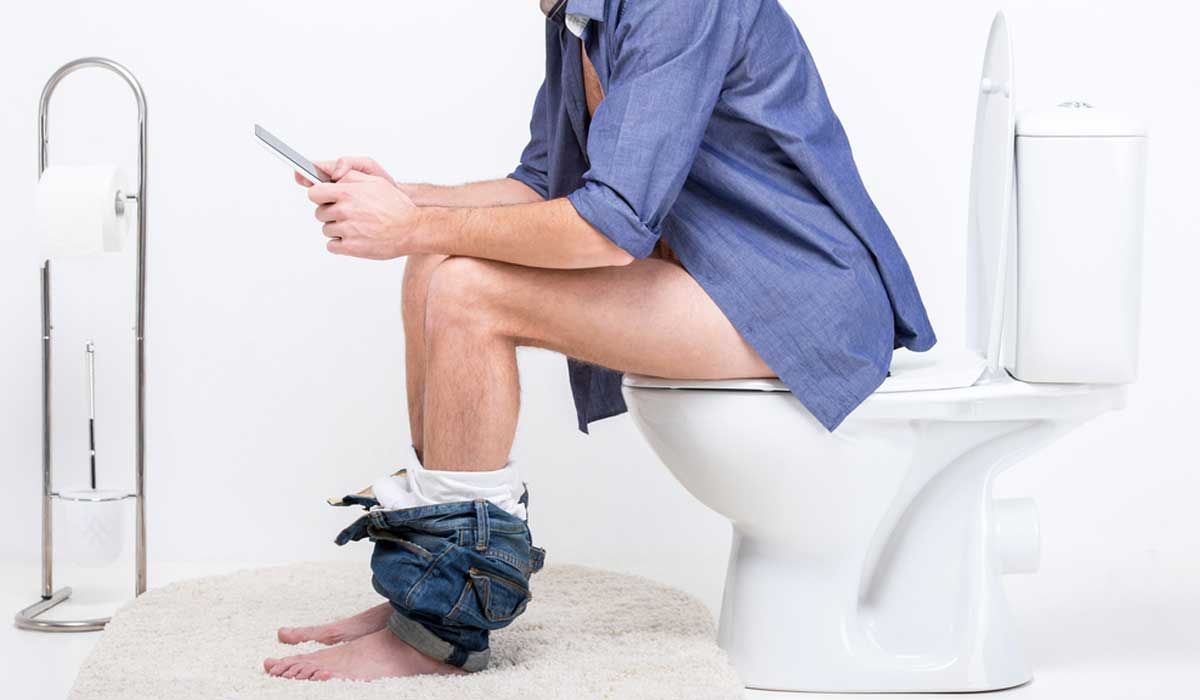A Doctor explains why
When you spend too much time in the toilet, it may happen that typical numbness and “pins and needles” feeling to your feet or legs. But why?
“This happens when we strain to push during a bowel movement, increasing pressure within the abdomen and raising the spinal column’s pressure”, Dr. Sonpal, a New York-based internist, and gastroenterologist, says. “This pressure can sometimes cause the spinal discs to move against nerves in the spine, leading to numbness, weakness, and tingling” in the legs and feet, he explains.
So, you’re more likely to lose feeling in your lower extremities when you practice poor posture because it can compress the nerves, which hinders blood flow to them. Those nerves run all the way down to your feet, so that poor blood flow can lead to tingling in your lower extremities.
“Sitting on the toilet in an awkward position can compress nerves or blood vessels, resulting in the pins and needles sensation”, Dr. Sonpal says.
If you’re a skinny guy, your feet are even more likely to fall asleep because body fat cushions the blood vessels in your legs, preventing them from getting compressed when you sit.
“Most people tend to hunch over during a bowel movement, which hinders blood flow to the nerves in your pelvis (these nerves also stretch down to your feet), explaining why someone might feel the tingling sensation even in their toes”, he explains.
Moreover, this pins-and-needles problem just gets worse if you sit down on the toilet for too long, Dr. Sonpal says. So, if you’re struggling with constipation, and your poop isn’t passing quickly, you might notice numbness in your lower body as time ticks away on the toilet.
While the “pins and needles” feeling on the toilet isn’t something to stress over, there are ways to tamp down the tingling in your legs and feet when on the toilet.
1. Don’t hunch over
“Hovering in a hunched over position can be hard on the pelvic muscles, preventing the colon from fully relaxing and passing stool effortlessly”, Dr. Sonpal says.
And the longer it takes for you to go, the more likely you’ll experience the tingling in your legs.
“The best way to prevent losing feeling in the legs and feet is to sit in the proper, relaxed position”, which, according to Dr. Sonpal, is upright with your knees higher than your hips.
2. Don’t linger
Dr. Sonpal recommends you “avoid spending longer than five to 10 minutes on the toilet seat, and if you are straining to pass the stool, get up and try again in 15 minutes”.
“Bowel movements should be easy, quick, and effortless”, says Dr. Sonpal, adding that you might need to incorporate more fiber and water into your diet to soften stool.
3. Get a toilet stool
A toilet stool raises your knees above your hips to put you into a squat-like position because squatting moves your colon into the ideal position to go without straining.
“Squatty potties can help the rectal canal be more open, which means less straining, easier bowel movements, and less time spent on the toilet”, Dr. Sonpal says.
4. Try a toilet cushion
Toilet cushions or padded toilet seats “can also give the buttocks and pelvic region more cushion, improving blood flow to the feet”, Dr. Sonpal says.
However, if you’re experiencing persistent numbness, you should talk to a medical professional, as this could be a sign of an underlying medical issue.
However, we all know that the toilet is not just a place for our needs but also for pleasure and relaxation. So it may happen to spend there a lot of time reading more than taking a poop. And there comes the tingling.
Source livestrong.com

